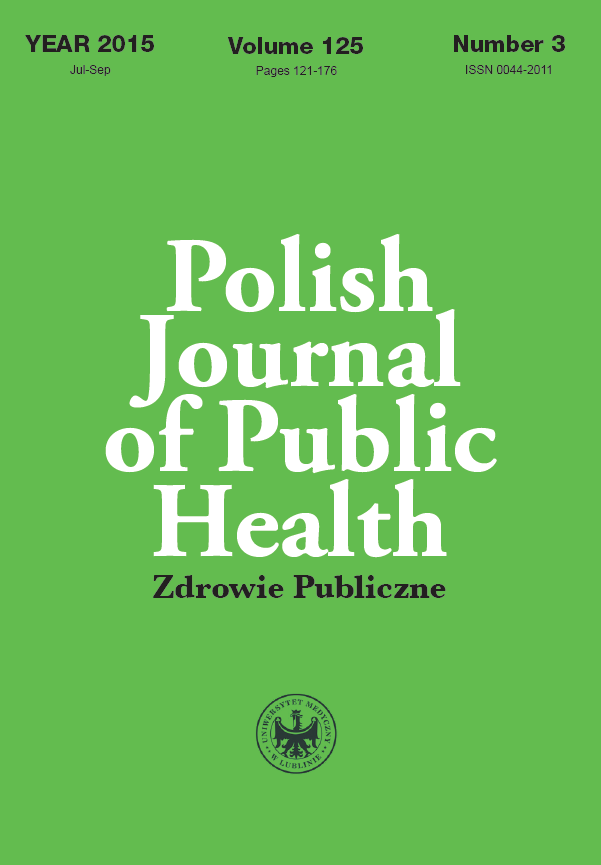Road accidents in the early days of the automotive industry
DOI:
https://doi.org/10.1515/pjph-2015-0049Keywords:
car accidents, automotive, road safetyAbstract
The first recorded road fatality happened over 140 years ago. Since then, road accidents have become one of the main causes of concern in almost every country in the world. Nowadays, fatal motor vehicle crashes occur at an interval of 50 seconds and injuries happen every two seconds. According to the WHO, the world road death toll is nearly 1.3 million and 20-50 million of people have been badly injured in road accidents and usually require long and expensive treatment. This paper looks at the issue of road accidents in the earliest days of the automotive industry. The article looks at the first laws, which were introduced to improve road safety. Virtually every member of society is somewhat affected by road transport. All traffic participants are at risk of an accident to a certain degree which is why reducing this risk should become a priority.References
1. Wu Xu, Hu S, Cui Y, Ma Y. Study on Evaluation of Harmonious Devel¬opment Between Transportation and Economy. JBJU (Social Sciences Edition). 2005;2:004.
2. Wolfgang K, Rybicki J, Mauve M. On the nature of inter-vehicle com¬munication. Communication in Distributed Systems 2007 ITG-GI Con¬ference. VDE; 2007.
3. Anderson D, Anderson J. Electric and hybrid cars: A history. McFarland, Jefferson; 2004.
4. Cummings P, Rivara FP, Olson CM, Smith KM. Changes in traffic crash mortality rates attributed to use of alcohol, or lack of a seat belt, air bag, motorcycle helmet, or bicycle helmet. United States, 1982-2001. Injury Prevention. 2006;12:148-54.
5. Gartman D. Three Ages of the Automobile The Cultural Logics of The Car. Theory, Culture & Society. 2004;21:169-95.
6. Williams K, Haslam C, Johal S, Williams J. Cars: Analysis, History, Cases. New York: Berghahn Books; 1994.
7. Struben J, Sterman J. Transition challenges for alternative fuel vehicle and transportation systems. Environ Plan B: Plan Des. 2008;35:1070-97.
8. Truffer B. Society, technology, and region: contributions from the social study of technology to economic geography. Environ Plan B: Plan Des. 2008;40:966.
9. Szczepaniak C. Cywilizacja a motoryzacja. Czas Tech. Mechanika. 1998;95:3-14.
10. Bijker WE, Hughes TP, Pinch T. The social construction of technologi¬cal systems: New directions in the sociology and history of technology. Cambridge: MIT Press; 2012.
11. Bengry-Howell A, Griffin C. Self-made motormen: The material con¬struction of working-class masculine identities through car modification. J Youth Stud. 2007;10:439-58.
12. Ranney TA. Models of driving behavior: a review of their evolution. Accid Anal Prev. 1994;6:733-50.
13. Tomson T, Beghi E, Sundqvist A, Johannessen SI. Medical risks in epi¬lepsy: a review with focus on physical injuries, mortality, traffic acci¬dents and their prevention. Epilepsy Res. 2004;1:1-16.
14. Scott I. Drive On! A Social History of the Motor Car. Injury prev. 2004;4:249-57.
15. Hı́jar M, Carrillo C, Flores M, Anaya R, Lopez V. Risk factors in highway traffic accidents: a case control study. Accid Anal Prev. 2000;5:703-9.
16. Chan CC. The state of the art of electric, hybrid, and fuel cell vehicles. Proceedings of the IEEE. 2007;4:704-18.
17. Klauer SG, Dingus TA, Neale V L, et al. The impact of driver inatten¬tion on near-crash/crash risk: An analysis using the 100-car naturalistic driving study data. Washington: National Highway Traffic Safety Ad¬ministration; 2006.
18. Lee JD, Young KL. Driver distraction: Theory, effects, and mitigation. CRC Press, Boca Raton; 2008.
19. Goniewicz K, Goniewicz M. Europejskie inicjatywy na rzecz poprawy bezpieczeństwa ruchu drogowego. Bezp Pracy. 2014;9:24-9.
20. Goniewicz K, Goniewicz M, Pawłowski W, Fiedor P. Road accident rates: strategies and programmes for improving road traffic safety. Eur J Trauma Emerg Surg. 2015, DOI: 10.1007/s00068-015-0544-6.
Downloads
Published
Issue
Section
License
Copyright (c) 2015 Polish Journal of Public Health

This work is licensed under a Creative Commons Attribution-NonCommercial-NoDerivatives 3.0 Unported License.


